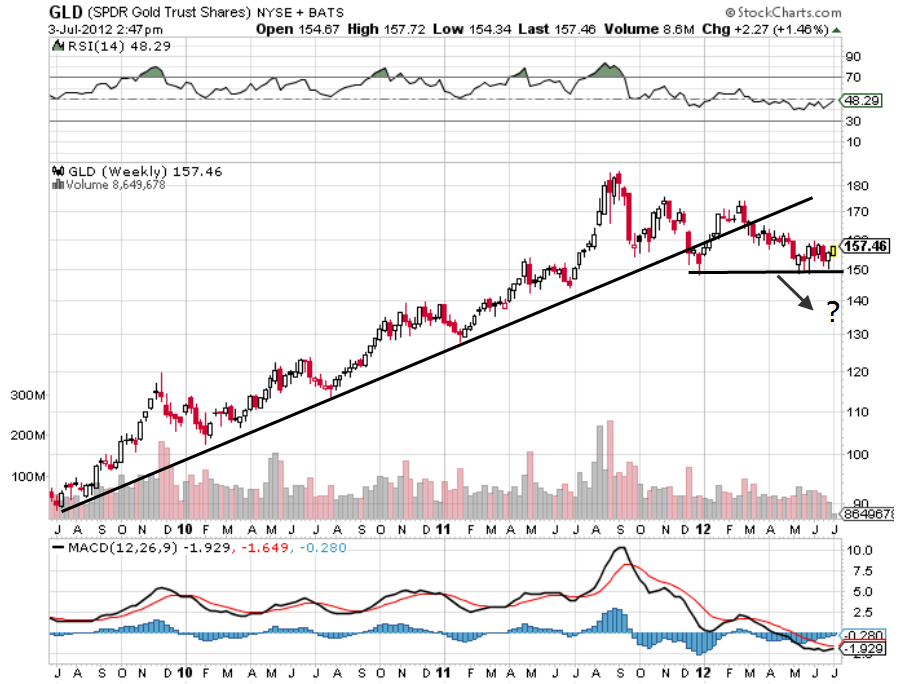This is the first installment of a multii-part series on the new breed of portfolio managers who are helping investors reach their financial goals on Covestor’s investment marketplace.
On Covestor, individuals can invest right alongside these managers and share their performance and expertise.
Today we’ll meet Aaron Pring, who manages the Buy and Hold portfolio.
The portfolio has been on the platform for a relatively short period — since February 2012. Nevertheless, the portfolio has posted an annualized return of 28.3% as of July 17 since its inception, compared with a return of 18.9% for the S&P 500 over the same period.
Pring is one of the individual investors on the Covestor marketplace. For his day job, he works as a vice president at a commercial construction company.
Below is an edited transcript of a recent interview:
Q: How did you get started investing?
A: Like many other investors who got an early start, I began in high school when I opened a brokerage account and started trading individual stocks. Initially, I invested for the benefit of myself and my family.
I earned a college degree in finance, which gave me a better understanding of the companies I was buying. I’ve done some investment management for a company, but primarily I’ve invested for myself and now Covestor clients can invest with me.
Q: You obviously have a buy-and-hold approach. How do you maintain that long-term focus?
A: Investing is not exactly my day job. But I consistently chip away at it every day, whether it’s after work or during work downtime or lunch. I have my list of stocks I’m considering, and I look at them every day. In particular, I’m looking for stocks and sectors that look like they’re out of favor.
I actually think it helps me not to get too caught up in the day-to-day emotion of the market. When you watch a lot of news it can trigger emotions and have a negative impact on your long-term investing and performance.
There is only one Warren Buffett obviously, but he illustrates that buy-and-hold can be a very successful strategy when done correctly.
Q: So how do you approach buy-and-hold investing?
A: It’s a fairly concentrated portfolio with about 10-20 stocks, give or take. I review the portfolio on a quarterly basis and may make a few trades at the beginning of the new quarter. I want to keep transaction costs and taxes as low as possible. Again, I chip away on research on my list of stocks, and it may take a whole quarter to get through the list.
My research starts with taking a very broad view on stocks, looking at things like valuation, liquidity and financial stability. As I whittle the list of stocks down, I then see if the stock price is in the right place.
After that, I will look at the company’s financials, including debt and capital ratios, the overall performance of the business, earnings growth and return on equity, for example.
I’m looking for stocks that are undervalued. I drill down into price-to-earnings (P/E) valuations, and I compare the current valuation against a 10-year average if it’s available. I also compare a stock’s valuation against the broader sector and the overall market.
Q: In a recent commentary you said it’s getting tougher to find bargains in the market. Why?
A: Pretty much in any given year you’re going to find sectors that underperforming or lagging the market. But all of them seem to be currently overvalued relative to their 10-year historical averages. I can’t find one sector that’s below-average valuation. Typically you get opportunities when individual sectors are at more reasonable valuations. It’s just tough to find “bargain” sectors. There doesn’t seem to be a lot of opportunities now. It is definitely the toughest since the end of the financial crisis – there aren’t really any big sector laggards.
Q: Would you consider going to cash then?
A: I might hold cash from dividends and not reinvest that cash. But I won’t sell stocks and raise cash in a buy-and-hold strategy.
I believe my current positions are at least reasonably valued. It’s just getting harder to find undervalued stocks to buy. However, I don’t see a reason to sell my own existing holdings because the overall market appears overvalued and keeps climbing.
Q: You manage a fairly concentrated portfolio in terms of the number of stocks held. How do you approach diversification? Do you try to spread holdings around in different sectors?
A: I don’t really think about sector diversification, although it times the stocks will be spread in various sectors. But no, I don’t necessarily target one stock from each of the nine or 10 major sectors, for example. If the values aren’t there I’m not going to buy a stock in a sector to make the portfolio more diversified. I’d rather buy all healthcare stocks if the valuations are compelling enough, rather than being diversified by sector.
Q: Your portfolio has been on Covestor for about two years and looks to be off to pretty good start. What is your market outlook?
A: It’s been a decent run so far but you frankly never know if it will continue. The thing to remember is that value-driven, buy-and-hold approaches may lag during raging bull markets. I tend to buy conservative, stable companies so I may not keep up in frothy, momentum-driven markets. However, this approach may provide some protection in down markets. Stable companies may fare better during the tough times.
See Part 2 and Part 3 of this series.
To learn more about investing with the portfolio managers on Covestor, contact our Client Advisers at clientservices@interactiveadvisors.com or 1.866.825.3005. Or you can try Covestor’s services with a free trial account.
Disclaimer: All investments involve risk and various investment strategies will not always be profitable. Neither the information nor any opinions expressed constitutes investment advice and is not intended as an endorsement of any specific portfolio manager. Covestor has over 100 portfolios which can all be compared here. Past performance does not guarantee future results.





